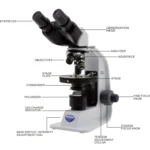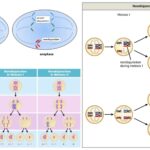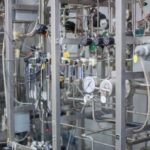State that urea is produced in the liver from the deamination of excess amino acids
State that urea is produced in the liver from the deamination of excess amino acids
Please login to submit an answer.
Urea production in the liver is a critical part of the body’s process for handling excess nitrogen that comes from the breakdown of amino acids. Amino acids are essential building blocks for proteins, but when they are in excess or when proteins are broken down, the body cannot store them. Instead, the nitrogen-containing amino groups (-NH₂) in amino acids need to be safely processed and removed from the body to prevent toxicity.
The process of handling these excess amino acids involves several stages:
- Deamination: The first step in processing excess amino acids is deamination, which takes place mainly in the liver. In this process, the amino group (-NH₂) is removed from the amino acid, leaving behind a carbon skeleton that can be used for energy or stored as fat or glucose. The removal of the amino group produces ammonia (NH₃), a highly toxic substance that must be quickly dealt with to prevent harm to the body.
- Conversion of Ammonia to Urea: Since ammonia is toxic, the liver converts it into a much less toxic compound, urea, through a series of chemical reactions known as the urea cycle, or ornithine cycle. The urea cycle incorporates ammonia and carbon dioxide to form urea, which is a safer, nitrogen-rich compound that the body can then eliminate. This transformation is crucial because urea is less toxic and can be transported in the blood to the kidneys for excretion.
- Excretion by the Kidneys: Once urea is produced in the liver, it enters the bloodstream and is transported to the kidneys. The kidneys filter the blood, removing urea along with other waste products and excess water, and excrete it from the body in the form of urine.
The urea cycle is an essential part of nitrogen metabolism and waste management in the body. By converting toxic ammonia into urea, the liver ensures that nitrogen waste can be safely removed, preventing potential harm to cells and maintaining nitrogen balance in the body. This process is especially important in people who consume high-protein diets, as it helps manage the increased nitrogen load from the breakdown of amino acids in excess protein.
- Share on Facebook
- Share on Twitter
- Share on LinkedIn
Helpful: 0%




